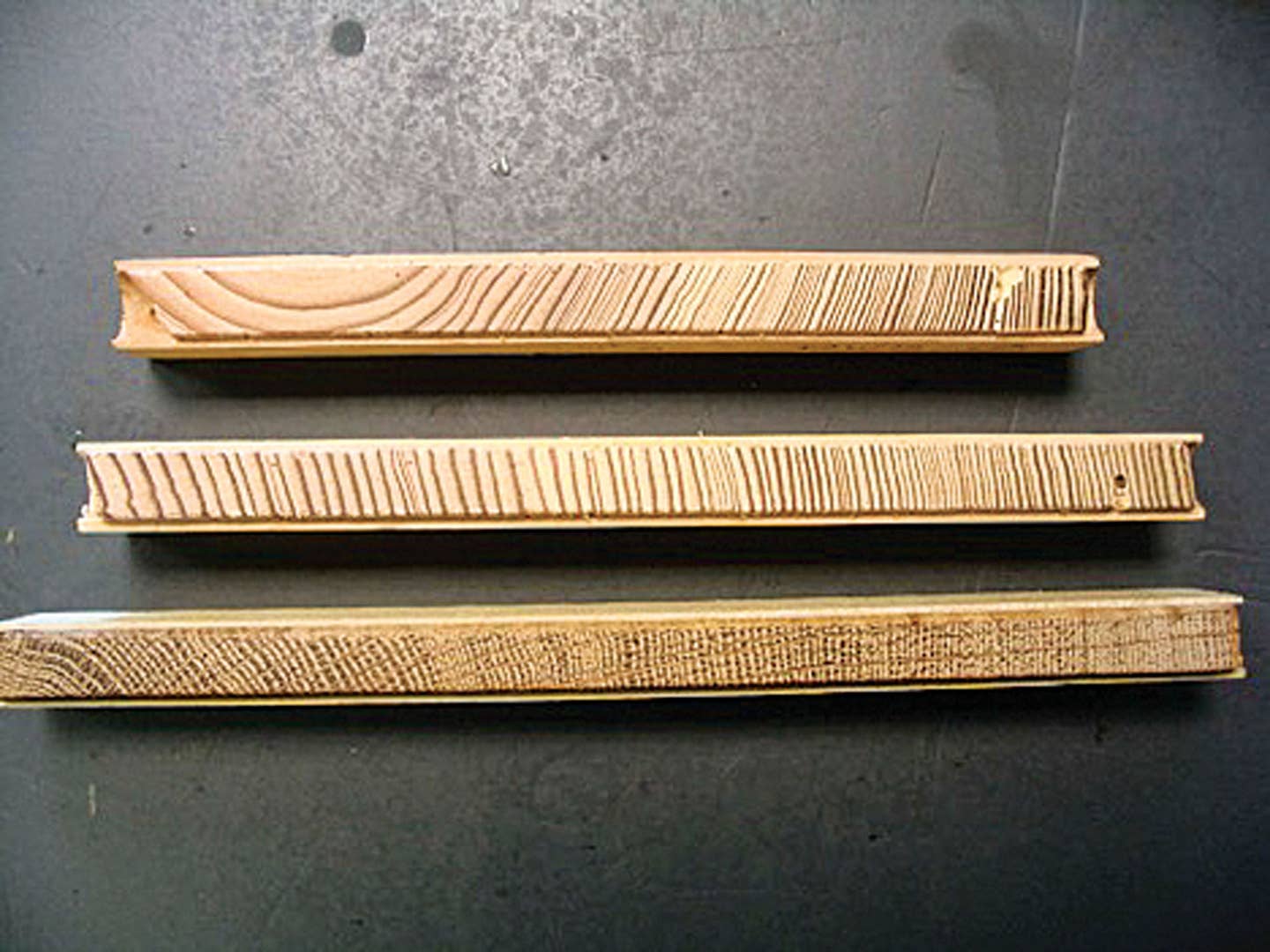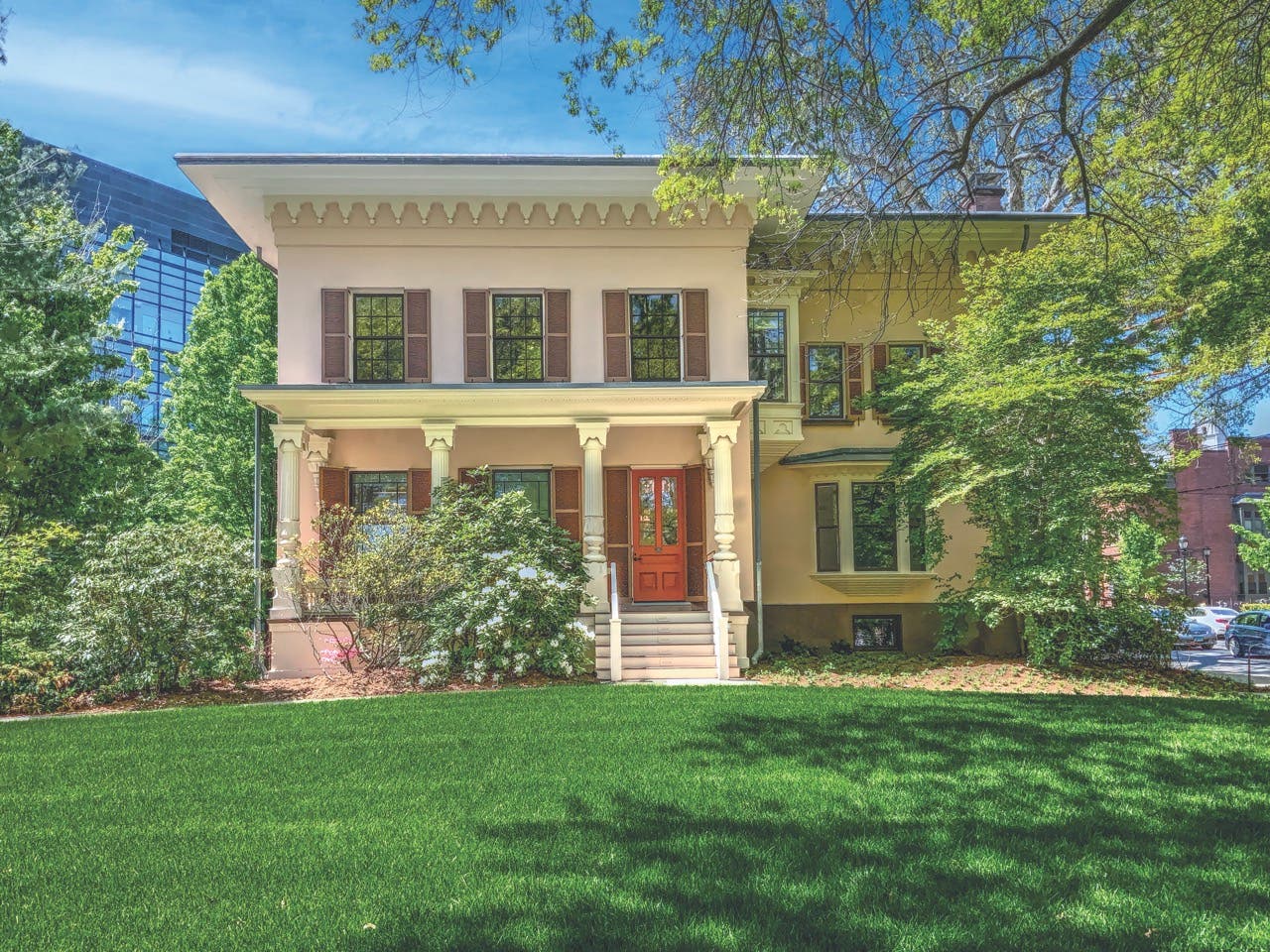
Product Reports
Dendrochronology
It was 2001 and Bill Flynt was on the case to determine the true age of the Sheldon house, one of the buildings in Historic Deerfield’s collection. There was a date marker of 1743, or possibly even earlier; a new ell had been added in 1802; he had bills of sale for glass and lime dating from the 1750s, and the structure had been restored in 1957. The front of the building had seemingly been built against an earlier building, long gone. A conclusive date eluded Flynt.
The quest to present accurate information about historic building construction led Historic Deerfield’s architectural conservator, Bill Flynt, to consider dendrochronology to help him resolve the disparities between the physical and documentary evidence.
He had heard that colleagues at the Society for the Preservation of New England Antiquities, now Historic New England (HNE), were conducting a pilot project working with oak to see if dendrochronology could be used to assist in dating buildings in eastern Massachusetts. HNE put him in touch with Columbia University’s Lamont-Doherty Tree Ring Laboratory in Palisades, NY.
Coincidentally, LDEO (Lamont-Doherty Earth Observatory, Columbia University’s laboratory in Palisades, NY) scientist Paul Krusic was going to be visiting Deerfield to see his sister, a teacher at Deerfield Academy, shortly after Bill made his initial contact. Krusic made the trip, reviewed the situation, and proposed a pilot project to see if pitch pine, the species of interest, could be used to date Deerfield’s historic structures. Several houses were selected for study, core samples were extracted, analyzed, and the results compared to a master chronology of tree rings for the same species from the New Paltz area in New York.
Paul found certain Deerfield samples aligned convincingly with the master, thus allowing the creation of the first dated master for pitch pine in New England. From this initial study, and ensuing work by Bill, the timbers from the main frame of the Sheldon house were determined to have been felled in the winter of 1753/4. Paul offered to train Bill and help him establish a laboratory at Historic Deerfield.
Bill Flynt had found his answer and a new passion. Since then, he has conducted dendrochronology studies on close to 250 structures throughout New England and New York State. His work has broken new ground on our understanding of building craft practice in the northeast.
Dendrochronology is the science of studying tree ring growth. Bill’s focus on historic construction studies is more aptly described as dendroarchaeology. Most of the research at university tree-ring laboratories today centers on understanding forest dynamics, forest fire history, climate change, and the impact of historical events on the growth and health of trees and people. Nevertheless, it is used to study diverse subjects such as excavated archaeological timbers from structures and ships, works of art painted on or sculpted of wood, and the species of trees that make up historic wooden architecture around the world. The knowledge that can be revealed includes dates that trees were felled, the trade networks of wood from harvest to use, and information of value to architectural historians.
Understanding the climate’s impact on trees can tell us what was happening to settlements at any given time. Bill mentioned the Jamestown Colony (1607) as an example. Analysis of Virginia trees by Dave Stahle and his colleagues at the University of Arkansas tree-ring laboratory revealed that there was an extreme drought during the early years of the settlement that was a significant factor in the colony’s demise.
Wood samples are taken from numerous locations within any given building, and the growth rings of the samples are microscopically measured and compared to master chronologies of respective species both from nearby sites and the region. The period of study where dendrochronology can be most helpful in understanding buildings in the United States ranges from the 17th to the mid-19th century. The primary tree species used in construction for which there are dated masters in the New England and eastern New York region include oak, pitch pine, hemlock, spruce, and to a somewhat lesser extent, white pine and chestnut.
One revealing project involved sampling a group of buildings on Martha’s Vineyard that were actually built in the second quarter of the 18th century, not the 17th century as previously thought. He surmised that the builders just continued to build as they had been taught without feeling compelled to move from First Period (1620-1730) practices into the early Georgian styles of the 1740s.
By sampling different areas of a building, his work has documented that occasionally upper stories of houses remained unfinished for several generations. This has led historians to concur that sometimes it took longer to finish homes than previously thought. He recently evaluated a reportedly early house in East Hartford, CT, that had been moved several times; the timbers were felled during the winter of 1697/8, proving the evidence aligned with the stories surrounding the house. More often than not, structures with purported 17th-century dates turn out to be 18th century when the dendrochronology study is complete.
Architectural historians sift through physical, documentary and anecdotal evidence to unravel the mysteries of extant buildings like detectives following a forensic trail. The use of scientific methods like dendrochronology reinforces the findings with verifiable data. Flynt is entering his 40th year at Historic Deerfield and is widely respected for his expertise in historic buildings. He can be reached at wflynt@historic-deerfield.org for those looking to hire him for an analysis of the microscopic ancestry of historic timbers and wooden architectural elements. Check out www.historic-deerfield.org to plan a visit to the museum.
Judy L. Hayward spends her days pursuing a passion for historic architecture and the ways in which it can be reused to sustain and grow healthy communities. She develops courses in partnership with builders, architects, traditional craftspeople and others to teach both historic preservation and traditional building skills. She has one foot in the nonprofit world as executive director of Historic Windsor and the Preservation Education Institute and the other foot in the world of media and information services as education director for the Traditional Building Conference Series and Online Education Program.









